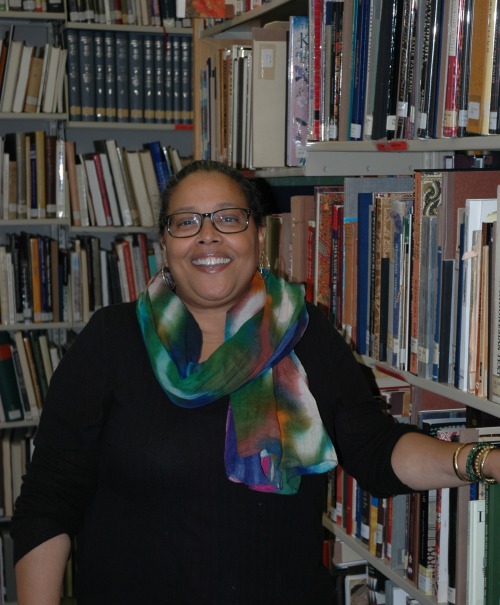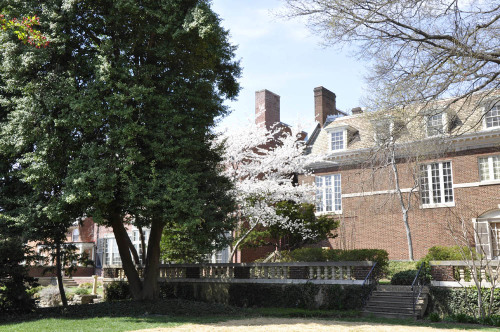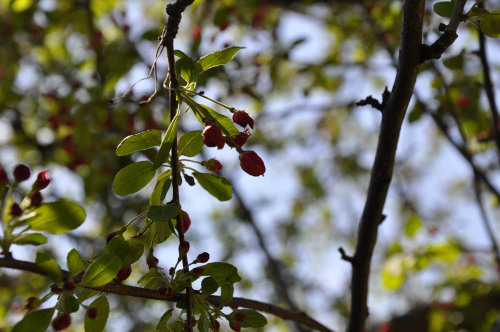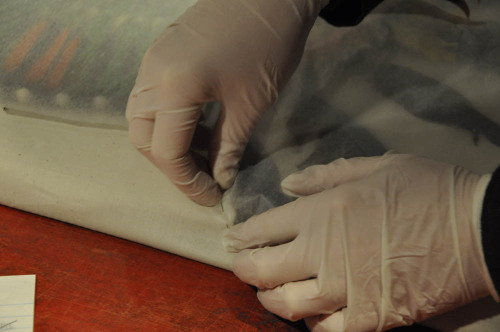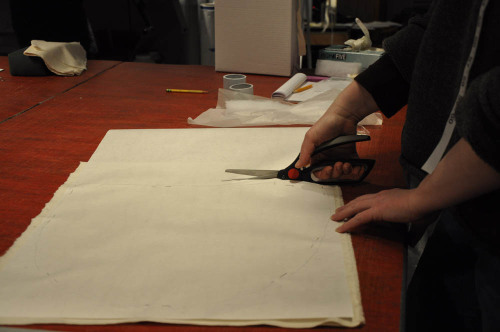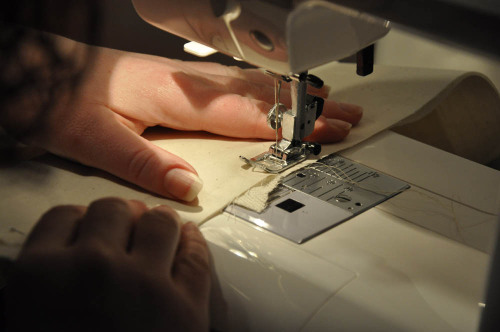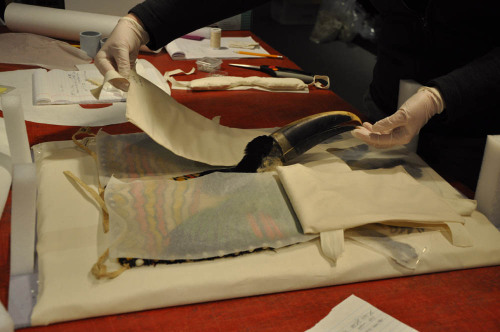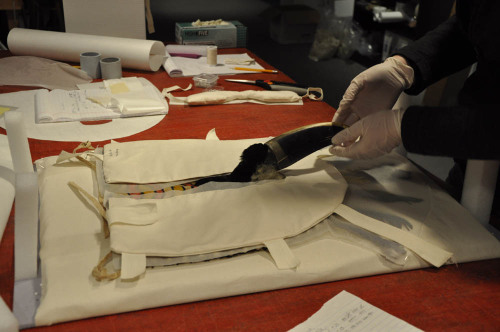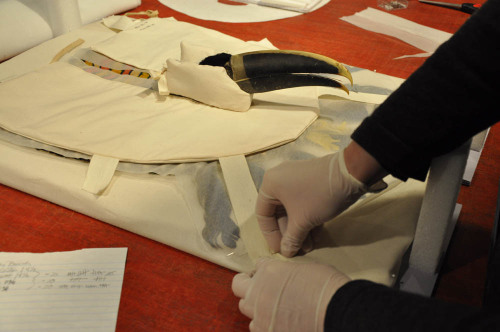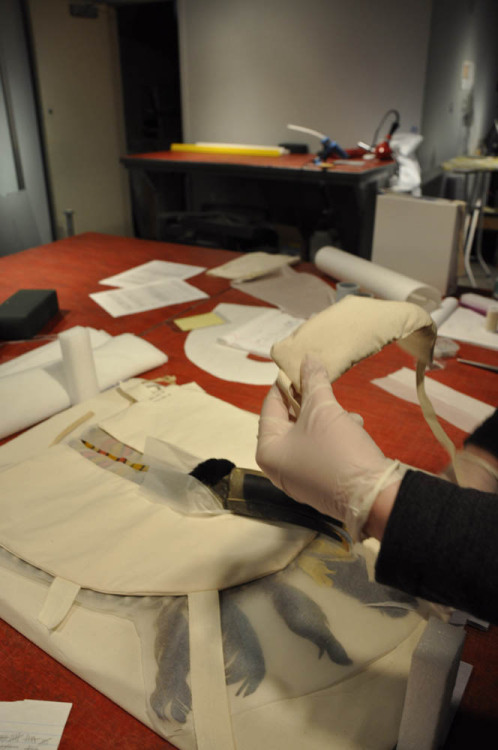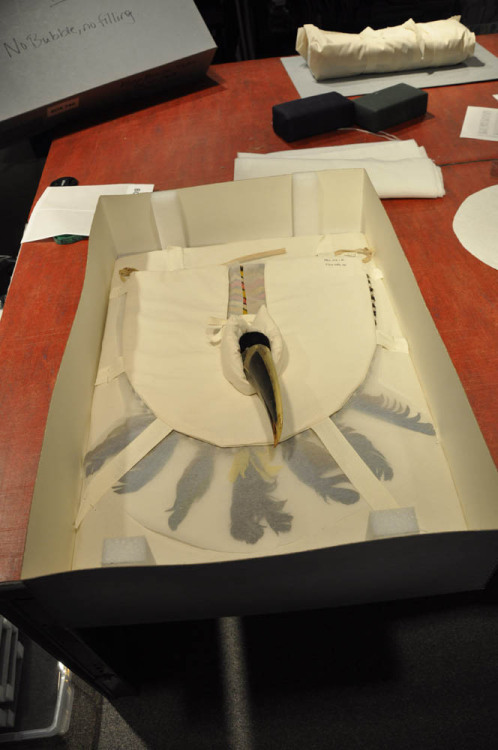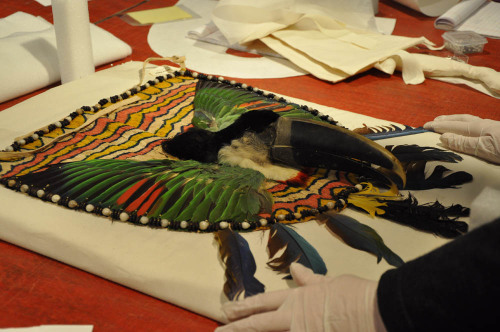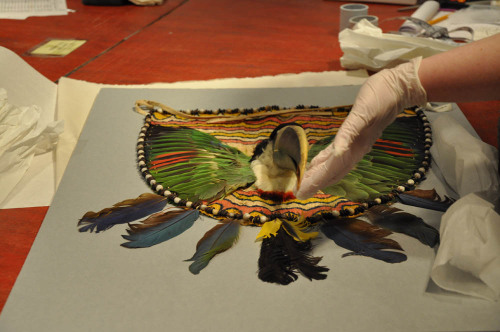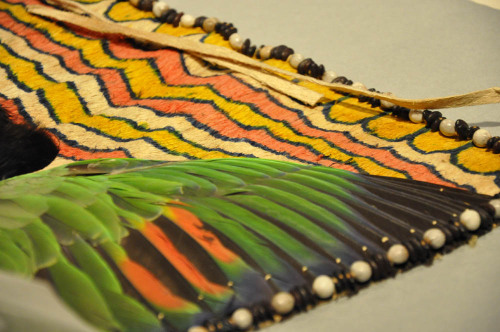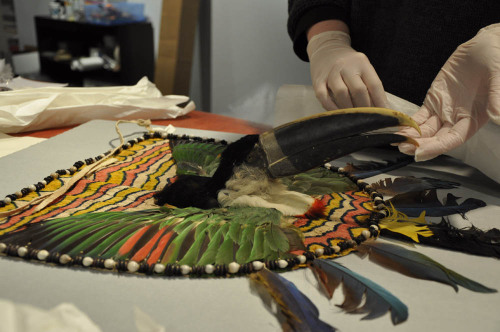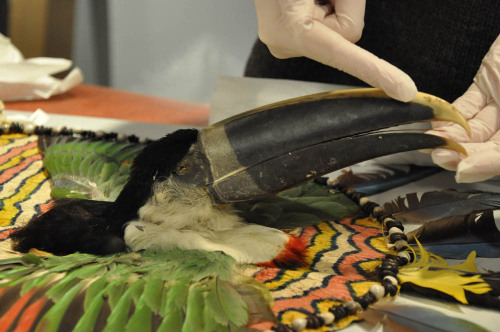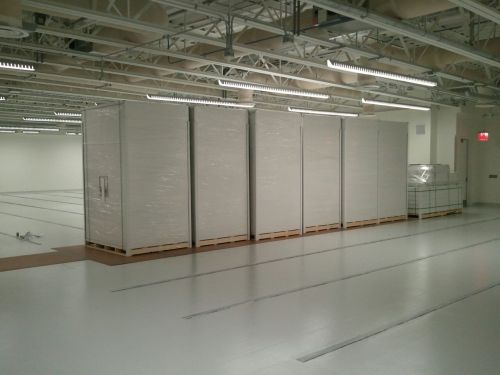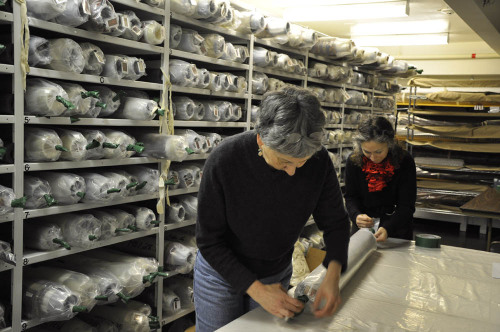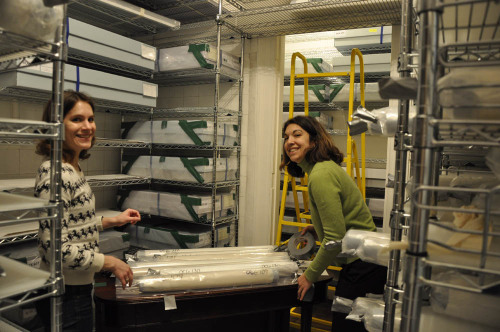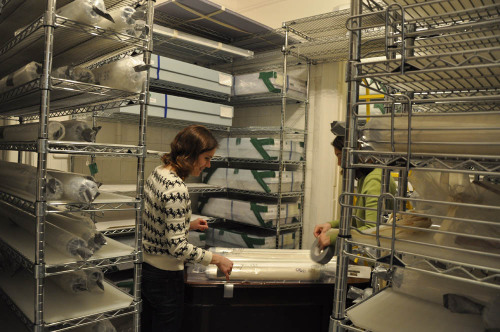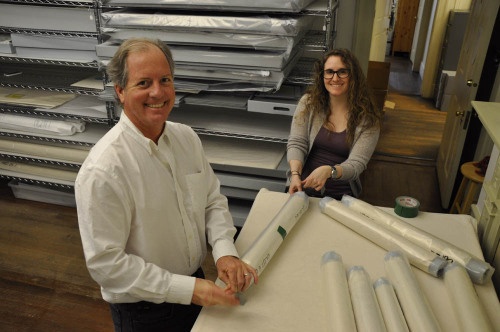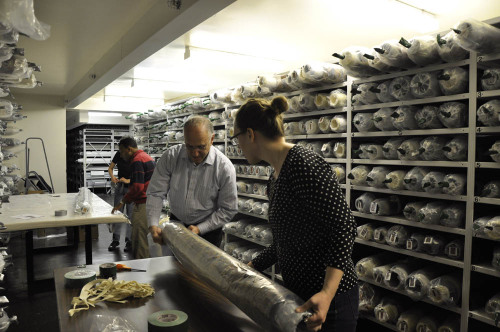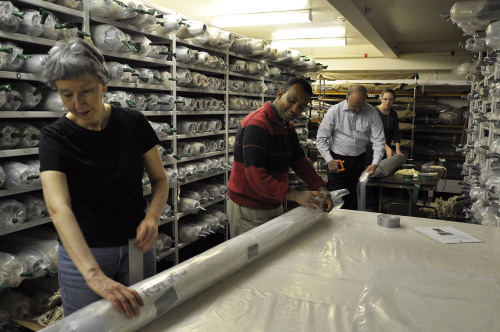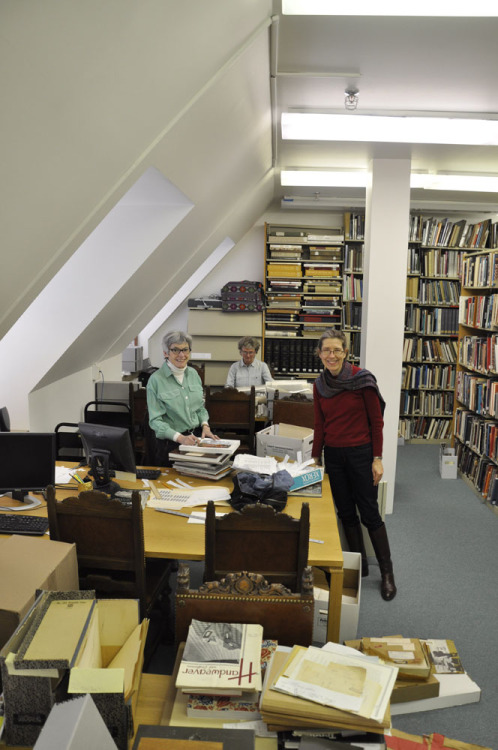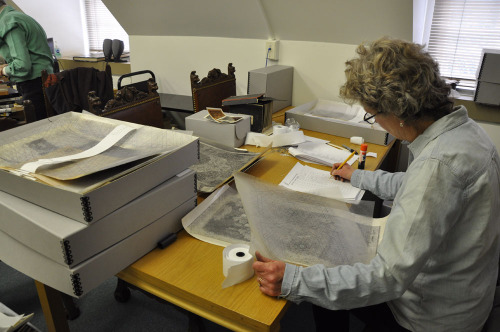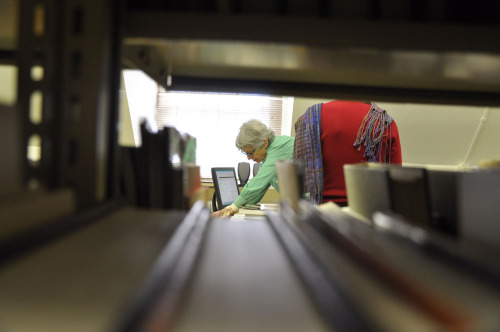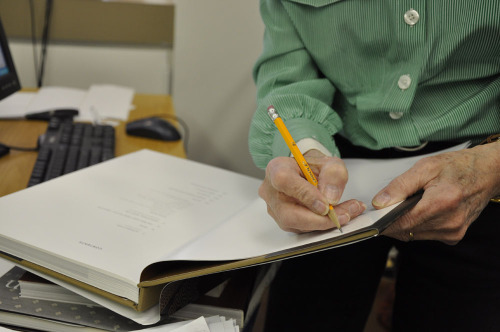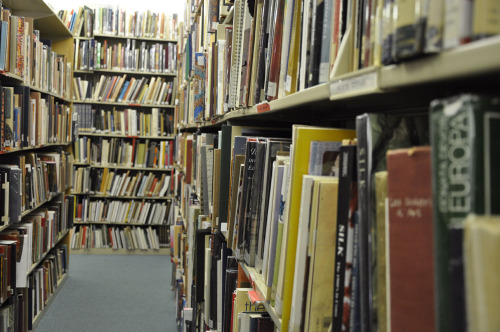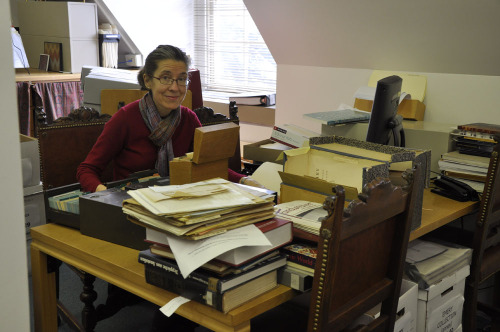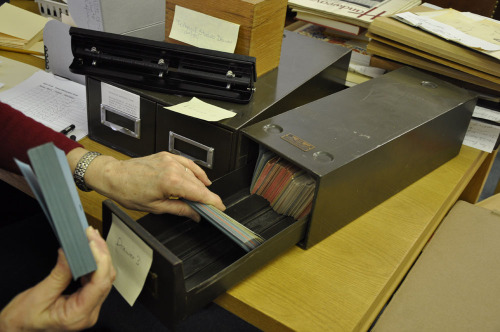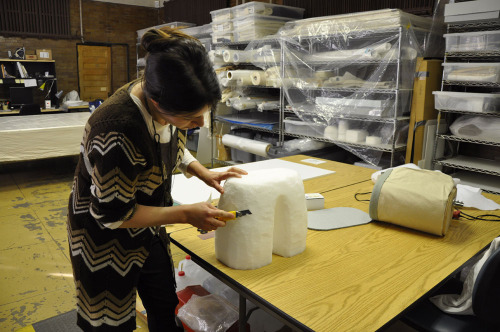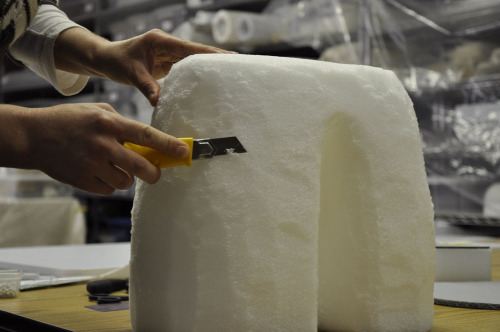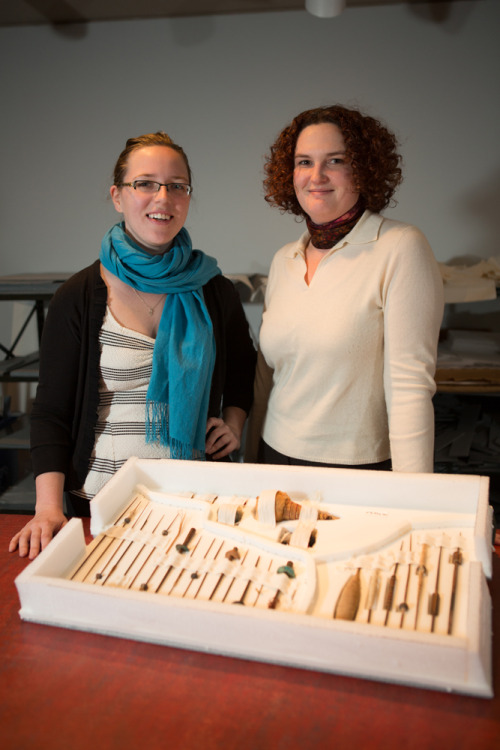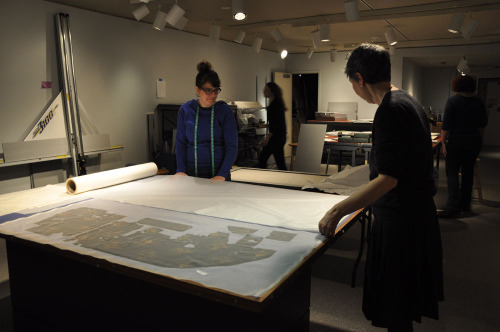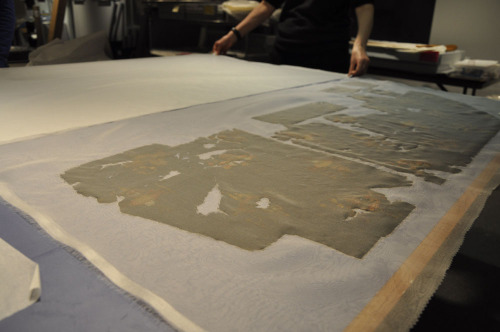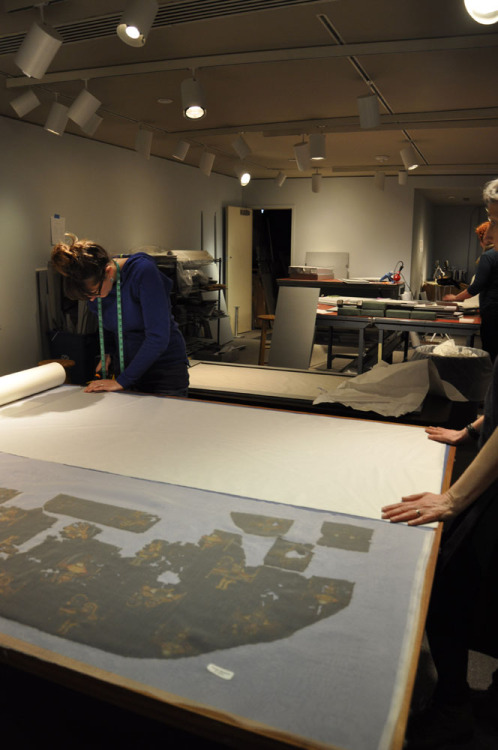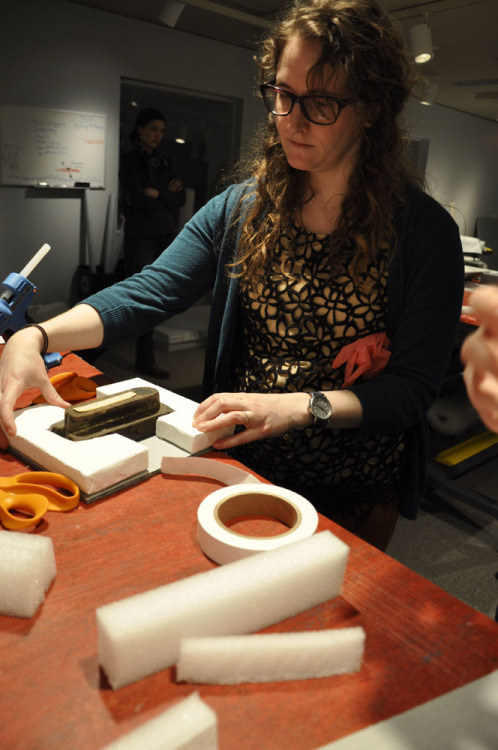#the textile museum
Meet Shelia Freeman!
If you have paid a visit to The Textile Museum in the past nineteen years, you probably know (and love) Sheila Freeman. For nearly two decades, Sheila has eagerly welcomed visitors at our front desk and worked tirelessly on TM membership. In her early career, Sheila never pictured herself working at a museum, but she admits, “I have always loved textiles [and] have been fortunate to meet so many different and exciting people.” Sheila is especially drawn to African and Indian textiles in the museum’s collections. In her spare-time, she hand-crafts her own textile creations—soft sculpture dolls for family and friends.
Post link
How to Pack Your Toucan! (Part 2)
After placing the toucan apron on its pillow, Associate Conservator Angela Duckwall covers it with a piece of unbuffered tissue, cut in a yoke shape to fit. She pins the outer edges of the tissue to the pillow to keep the feathers in place. Next, she creates a muslin and batting bib to cover the majority of the apron, again in a yoke shape to allow for easy placement and removal. This bib has straps that are pinned down to the pillow to secure the whole unit to the base board. Finally, the neck of the toucan was in need of support: Duckwall created a support collar of batting and muslin that cradles the head of the toucan, alleviating stress on the neck.
He’s ready for his big move! Great job, Angela!
- Apron, Ecuador, early 20th century. Bark cloth, feathers, beak, beads.TM 1966.23.1A. Museum Purchase.
Post link
How to Pack Your Toucan! (Part 1)
Associate Conservator Angela Duckwall had an unusual task this week: to stabilize and pack a Ecuadorian bark cloth apron, complete with a toucan head (yes, that’s a real head, folks!) and macaw and parrot feathers! Can you believe this apron is just one piece of an equally impressive ensemble?
First, Duckwall created a muslin pillow for the apron to rest on. Next, she cut an archival base board to fit the internal dimensions of the box. She glued Ethafoam posts to the board that are slightly taller than the box. When the lid is placed on the box, it will place pressure on the Ethafoam, keeping the base board and object from shifting.
Stay tuned for our next steps in packing this gorgeous toucan apron!
- Apron, Ecuador, early 20th century. Bark cloth, feathers, beak, beads.TM 1966.23.1A. Museum Purchase.
Post link
New storage cabinets have arrived at the museum’s recently completed conservation and collections resource center in Ashburn, VA!
Post link
Recently some of The Textile Museum’s non-collections staff members lent a hand preparing our rolled textiles for freezing prior to their move to the new conservation and collections resource center in Ashburn!
Thanks so much to Senior Curator Sumru Belger Krody, Communications and Marketing Associate Chita Middleton, Director John Wetenhall, Chief Financial and Administrative Officer Doug Maas, and Accounting Associate Kibebew Wondriad.
Post link
As The Textile Museum prepares to move the Arthur D. Jenkins Library of Textile Arts, volunteers (from left to right) Susan Dichter, Gayle Gibbons, and Margaret Yamamoto work diligently to label books, assess and rehouse photographs, and catalog archival material. The library will reopen with the new museum at the George Washington University in late fall 2014.
Post link
Associate Conservator Maria Fusco is carving archival ethafoam to make the base for a hip form. This hip form will be used to display a sarong from Indonesia in The Textile Museum’s first exhibition at its new location at the George Washington University, Unraveling Identity: Our Textiles, Our Stories.
Post link
Meet Our Team!
Chelsea Hick and Angela Duckwall have spent countless hours preparing and packing The Textile Museum’s collections to move to the George Washington University. Get to know this dedicated duo, and stay tuned for future posts featuring other members of our TM team.
Chelsea (left) grew up in Connecticut and Florida and began work at The Textile Museum in 2010 as a part-time receptionist. Now the museum’s registration technician, Chelsea helps solve challenging collections rehousing projects. In her time off, she’s often working at a local foods market or exploring Washington, D.C. with her film camera.
An Indiana native graduate of the University of Delaware’s art conservation master’s program, and former TM intern, Angela (right) has been an associate conservator at The TM for two years, focused on the collections move. An avid knitter and cook, she has baked many tasty treats for the staff’s monthly “Cake Day.”
- Spindles, implements, yarns, and fiber, Peru. TM N91.45A-DD. Acquired by George Hewitt Myers. Photo by William Atkins / The George Washington University.
Post link
Chief Conservator Esther Méthé supervises conservation intern Annaïck Keruzec as she cuts tissue for a custom mount. The mount will help secure a very fragile oversize fragment that Méthé and Keruzec have encased in silk crepeline for stabilization.
- Mantle fragments, Peru, south coast, Paracus. TM 91.337A. Acquired by George Hewitt Myers in 1941.
Post link
Registration Technician Chelsea Hick and Assistant Registrar Tessa Lummis are assembling three-dimensional mounts to house wooden printing blocks. These mounts are made from archival blue board and ethafoam covered in Tyvek. Archival hot glue secures the foam, and twill tape is used for the handles.
- Printing block, India. Wood. TM 1970.29.14. Textile Museum Membership Purchase.
Post link

